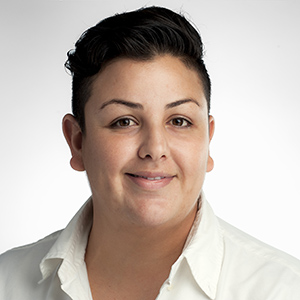The ACI’s Transition Care Network brings together clinicians, health managers, young people, families and carers to design and implement innovative ways to improve continuity of care for young people as they transition to adult health services. The outgoing co-chairs share their experiences and lessons learnt from leading the network.
Transition Care Network Co-Chairs

Associate Professor Susan Towns
Consultant Paediatrician and Adolescent Physician, Sydney Children’s Hospitals Network
Adolescent Medicine, University of Sydney Medical School

Mae Rafraf
Youth health advocate
In 2021 Susan and Mae will step down as co-chairs after many years leading the network.
Read more about the incoming network co-chairs below.
What is the primary purpose of the Transition Care Network?
“The Transition Care Network was first established in 2004,” explains network co-chair Associate Professor Susan Towns. “It aims to improve the continuity of care for young people in NSW aged between 14 and 25 years with chronic health problems, as they move from paediatric to adult health services for ongoing care.
“The network brings together clinicians, health managers, young adults, families and carers to design and implement innovative ways to improve the way care is integrated and delivered.
“In addition to being a centre for resources, research and expertise, the network provides a statewide clinical service, the Transition Care Service, with three care coordinators.”
Tell us about your network members and what expertise they bring?
“The network has more than 190 members and 26 executive members,” says Susan.
“We appreciate our consumer representatives and the broad representation of paediatric and adult healthcare clinicians from almost all local health districts and specialty health networks across NSW Health. Any paediatric or adult healthcare clinicians caring for young people between 14 and 25 years with chronic conditions are encouraged to join.
“We have representatives from other areas of government, such as the NSW Department of Education and the Cancer Institute NSW. The network also benefits from the input of non-government organisations, primary health networks and members of major academic institutions.”
I was able to highlight the good and bad experiences of transition and be an advocate to implement best practice, so our chronically ill young people have one less thing to worry about.
As network co-chairs, what has been most important to you?
Mae Rafraf says she was able to draw on her experience as a young person who transitioned from children’s to adult healthcare services. “I was able to highlight the good and bad experiences of transition and be an advocate to implement best practice, so our chronically ill young people have one less thing to worry about.”
For Susan, it is important to keep the needs of young people with chronic conditions on the agenda across all areas of health.
“This can be a hidden population,” she explains. “Around 10% to 20% of young people are affected by chronic conditions and they demonstrate amazing resilience; however, the impact on adolescent physical, psychosocial and pubertal development can be significant.
“With improvements in early diagnosis, effective therapies and increased prevalence of some chronic conditions, the number of young people requiring multidisciplinary and coordinated specialist adult care are increasing. As a health system, we need to understand and plan how best to meet their needs.”
What are some key achievements of the network?
“Links have been fostered with other ACI networks and transition resources developed across areas like pain management, stroke, brain injury, palliative care, rehabilitation, urology, cystic fibrosis and gastroenterology,” says Susan.
“We have developed transition key principles with the Sydney Children’s Hospitals Network’s Trapeze service,” explains Susan. “This provides a framework that services can incorporate and use in their area of health. A good example of this is the Northcott Spina Bifida Adult Resource Team that effectively delivers coordinated care in a mainly ambulatory setting, and more recently the botox project that translated a paediatric model to adult settings.”
Other major achievements for the network include:
- ongoing qualitative and quantitative research, which is crucial to help answer questions around what makes a good transition
- reviewing current transition literature to update the network's key principles document and inform development of patient-reported measures for transition
- collaborating with other transition research initiatives.
What are your tips for leading an effective clinical network or group; particularly operating in a virtual environment?
Mae says the impact of patient stories should not be underestimated. “The displays of passion, resilience and empathy of the young people and their families have power.”
“Good communication is key,” explains Susan. “This includes listening, being open, accessible and available for updates and informal briefings.
“Staying connected involves sharing information with other ACI networks, presenting at conferences, participating in clinical research and evaluating our programs and initiatives.”
After a year of virtual meetings, Susan has been heartened by the acceptance of video conferencing. “But it is still nice to be in the same room and share a cup of tea.”
How do you keep your members actively engaged in network activities?
“Members have the opportunity to collaborate, network and share their experiences and expertise, which all make a huge difference in the lives of young people,” says Mae. “They also gain access to the latest transition care events and resources.
“We produce quarterly newsletters after each Executive meeting to keep our members informed,” adds Mae.
Members are invited to join working groups and contribute to key projects.
The network also encourages members to apply for grants to resource projects that need dedicated time and resources.
What is your focus for the year ahead?
This year, the network’s co-chairs are changing. Susan is stepping back from her Sydney Children’s Hospitals Network Head of Department role and will step down as co-chair after more than 10 years.
She considers it a great privilege to have worked with such a committed group. “We are united in our advocacy to effectively and optimally meet the needs of young people in our healthcare system. We have been fortunate to have wonderful leadership from our inaugural ACI network manager Lynne Brodie, then Vanessa Evans and now Rachael Havrlant, and the ACI transition team’s ongoing commitment to meet the needs of young people."
While transition is now well understood, challenges remain. “These include resourcing appropriate adult services where there are demonstrable gaps in care and research providing evidence to enhance transition and outcomes for young people,” she says.
Mae will also step back after many years as co-chair. She has provided important youth leadership and advocacy and will continue to provide direct advocacy, ensuring young people’s voices are heard.
Mae says being co-chair has been an honour. “I have engaged with many great leaders, organisations and amazing individuals who have all impacted my life and the way I live.”
The network’s new co-chairs, Lif O’Connor and Dr Jane Ho, bring great enthusiasm and energy and their transition service experience and expertise to their new roles. They will continue the ongoing work to 'make transition everyone’s business'. Read more about the network's new co-chairs in the network news update.
“We would like to thank Susan and Mae for their years of dedication to the network and support in welcoming the new co-chairs as they settle into their new roles,” says Rachael Havrlant, Manager of the Transition Care Network.